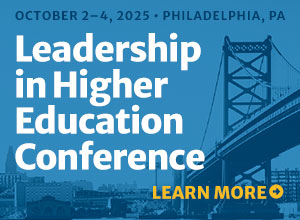Getting Organized: Tips for Academic Leaders
Many people want to get organized but don’t know where to begin. Or, they make a major effort to reduce the clutter in their offices but can’t stay organized, and their desks soon become as messy as they were before their last attempt to purge the papers from their offices. So, how...
Clemson Provides Textbook Case of Performance-Based Fire Protection at New Football Practice Facility
The Allen N. Reeves Football Complex is the first in South Carolina history to utilize a performance-based design code analysis approach (tested to meet specific goals) to fire code safety, instead of a traditional prescriptive approach (adhering strictly to written codes), according to Paul Borick, one of Clemson University’s Capital...
Friendship as a Teaching Strategy for Graduate Students
As graduate students, we find that developing friendships with professors results in increased learning and performance. In such an environment, one is not afraid to reveal weaknesses or academic shortcomings, and it erases (or minimizes) any insecurity that could result from unequal content authority. We feel secure in asking questions,...
The Department Chair: A Retrospective Perspective
The department chair is a linchpin of a university. It has been estimated that 80 percent of the decisions made in higher education are made at the department level. The chair is a classic hybrid-in-the-middle position; not really an administrator but “more than” a faculty member. The roles and responsibilities...
Creating Space, Relieving Stress, and Making the Job More Enticing
One downside of the chair position, aside from the heavy workload, is that it leaves little time to do the work that they originally joined the academy to do—research and individual scholarship. Yet, at the same time, a strong majority of those contributing to these surveys indicate that they are...
What Academic Leaders Should Know about Student Dating and Domestic Violence
According to the National Coalition against Domestic Violence (NCADV), domestic and dating violence includes intimidation, emotional abuse, threats, physical violence, and sexual violence. The abuse is part of a “systematic pattern” of behavior the abuser uses to have power over and control of an intimate partner. It is also something...
Can Technology Improve Student Safety?
The Companion app, explain the University of Michigan students, provides more immediate safety. “If the user strays off their path, falls, is pushed, starts running, or has their headphones yanked out of their phone, the app detects these changes in movement and asks the user if they're OK. If the...
Six Steps to Process Students’ Stress
School administrators are often on the front lines for student trauma—the first person with whom a student confides about incidents that can create significant stress. In turn, many school administrators must also consider how to process these traumas to minimize adversely impacts from their own stress levels.
Moving Beyond One and Done Sexual Misconduct Trainings
Basic sexual misconduct trainings are important, but for Title IX compliance and proper sexual misconduct training, administrators should do more. It is important to consider steps to take beyond simply baseline compliance.
How to Build a Threat Assessment Team on Campus
The list of potential risks and threats a university or college campus may face is quite long and complex. Threat assessment teams can facilitate the process of managing these threats, handling the decision-making process, and developing a supportive and proactive campus culture. Every team should be developed with the goal...












